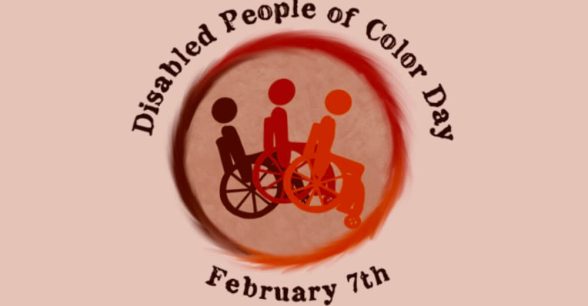Empower Your Students Through Disability-Conscious Teaching
Historically, disabled people have been subjected to isolated, segregated education. And there’s still a notion that a disabled person in the classroom is a shocking and novel thing, and disabled people don’t belong in school. In a classroom space where there are no visibly disabled people, teachers and staff may incorrectly assume that no one in the room is disabled — and thus that they don’t need to be disability-conscious.
Disability-conscious teaching should be the standard in schools everywhere, creating a more welcoming and inclusive environment for disabled and nondisabled students alike. Nondisabled people take cues about how they think about disability from teachers and other authority figures in their lives and receiving affirming messages about disability is one way to bring up a new generation of thoughtful people who value the disability community and its contributions to society.
For disabled students, disability-conscious teaching and the sense of “I feel seen” can be transformative; knowing that a professor recognizes their presence in the classroom and actively includes their experience in coursework can be empowering for people who are used to being hidden in the back of the room. Disabled students may struggle to pursue an education when they feel excluded by coursework and the classroom environment, and disabled people are overall less likely to have higher education degrees. There are many reasons for this, including the cost of college and disability discrimination, but the classroom climate can be a big factor.
With minimal instruction in disability-conscious teaching provided to most educators, it can be tough for teachers — even those with great intentions — to reach disabled students. I talked to an assortment of disabled students and educators to get some tips from them.
Many expressed a desire for educators to educate themselves about disability issues. It can be challenging to find comprehensive, accurate information if you don’t know where to start; calling on disability services to do orientations for teachers and provide information about disability in education is one way to do it. So is working on lecture series and continuing education options to learn about disability and keep learning.
While teachers and professors are required to comply with the law when it comes to accommodating students, that legal requirement doesn’t always translate into a real-world inclusive environment. Try to think above and beyond the law, especially since not all disabled students come to class with support from disability services. They may be trying to go it alone or may not think they need or deserve accommodations.
Building a better syllabus
Syllabus design came up very frequently in the conversations I had, because the syllabus often acts as an introduction to the class and the teacher. It can set expectations for classroom climate and may signal whether an instructor is inclusive.
In addition to any accessibility statement with information about accessing disability services and other disability resources, teachers can be more proactive. Teachers can consider listing common accommodations and make it clear that they’re open to providing more if students want to talk with them about their needs. Especially in college, new students may not know what would be helpful, and seeing some examples — like the option of large print or digital assignments — could make a huge difference.
Access is key
Many students have spoken out about laptop bans, noting that they present challenges for disabled students — and getting an exemption can make a student stand out, which feels awkward. Consider not using a laptop ban in your classroom and rethinking other technology bans as well; some students record lectures on their phones, for example.
Accessibility applies online, too — and despite legal mandates, not all online classes and course management tools are accessible. If you or your school requires students to use an online platform for homework, class discussion, and other activities, is it accessible? If it’s not, have you pressured school officials to address issues and do you have stopgap accommodations in place for your students? Some things to think about include: whether videos are captioned and transcribed; whether users can adjust the size, color, and fonts for readability; whether a platform can be navigated with a screenreader; and whether a plain language guide to all features and contact information for support is provided.
Also consider how you structure your absence and grading policy. For example, some teachers announce that they will drop the lowest test grade from the semester, creating room for students who miss a test or do poorly for any reason, including disability. Similarly, not requiring excuses or explanations for absences can make disabled students feel safer if they need a day off.
Some teachers claim that policies like dropping test grades or not requiring perfect attendance will be “taken advantage of” by some students. Perhaps they will, but isn’t that the student’s problem, not yours? The benefits of disability-inclusive policies far outweigh the drawbacks; a student skipping some class because they feel like it doesn’t cause a disruption, while a student forcing herself to class even when she feels very ill is hurting herself to meet your expectations.
“Because I was graded based on the quality of my work instead of the number of times my butt was in a particular chair, I didn’t have to make myself sick(er) in order to get to class on days my body truly couldn’t handle it,” says Caitlin Nascher. Open policies like these also encourage clear, honest communication.
Making a disability-friendly classroom
If a student does come to you with accommodations recommended by disability services, work with the student on them — and don’t comment on whether you think the student “needs” those services. If you think the recommended or requested accommodations may be disruptive, do some brainstorming and researching on your own time to see if there’s a way to creatively problem-solve so the student gets what they need. Think “I see disability services recommended X, which might be a little challenging. One suggestion I have is that we could try Y, which might meet your needs?”
Beyond syllabi and accommodations, disabled students want to know that you have their back. Even if you think a room is filled with nondisabled people, be conscious about the way you use language and talk about disability to make it clear that disability is part of the fabric of society, and that you don’t see disability as a bad thing or source or shame. When students dismissively call things “crazy” or suggest that something is “retarded,” take a minute to challenge them and unpack the rationale behind those thoughts.
And consider that the topic of disability doesn’t have to be restricted to Very Special Lessons. Disability weaves throughout society, culture, and history. If you’re talking about the civil rights movement, include discussions of disability rights activism. If you’re teaching science, explore the disability implications of something you’re discussing, whether it’s CRISPR or experimental design. Push yourself to think about the disability angle when it comes to the topic at hand to create a more affirming environment for your students.
Creating a safer environment for your disabled students will help them live to their full potential in class, and their experience, knowledge, and thoughts will be beneficial for their classmates, too.
About Rooted In Rights
Rooted in Rights exists to amplify the perspectives of the disability community. Blog posts and storyteller videos that we publish and content we re-share on social media do not necessarily reflect the opinions or values of Rooted in Rights nor indicate an endorsement of a program or service by Rooted in Rights. We respect and aim to reflect the diversity of opinions and experiences of the disability community. Rooted in Rights seeks to highlight discussions, not direct them. Learn more about Rooted In Rights



